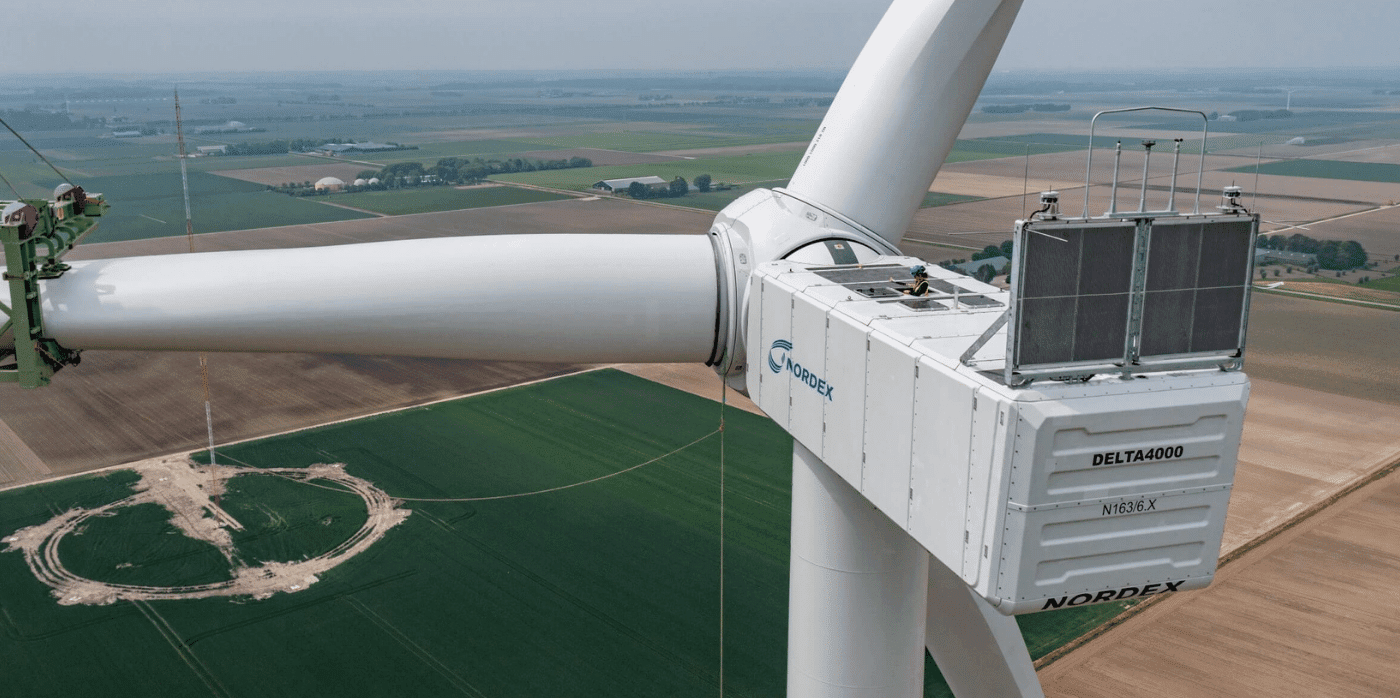A new onshore turbine for quieter wind power
Spotted: Wind manufacturing world leader Nordex Group has installed its first turbine in the 6-megawatt class at an onshore wind project in the Netherlands. Among other benefits, the new model is much quieter than its predecessors – reducing the impact on the local area.
The turbine—known as the N163/6.X—was launched in September 2021 as the latest upgrade from Nordex‘s Delta4000 series. Compared to its sister model in the 5-megawatt class, it is able to produce an up to 7 per cent higher annual energy yield thanks to its much higher rated output. Thanks to its flexible configuration, it can be adapted to the specific conditions at each project site, resulting in a tailor-made solution for each client. The design’s lifetime is 25 years, with an extended 35-year lifetime available for specific sites.
Nordex has installed a total wind power capacity of more than 32 gigwatts in over 40 worldwide markets since it was founded in 1985. Among its hosts are Germany, Spain, Brazil, India, Mexico, and the United States.
José Luis Blanco, CEO Nordex Group explains that, “Our turbines in the Delta4000 series are based on a standard technical platform. Consistent modularisation means that type-specific components, such as rotor blades or gearboxes, can be adapted for different variants. The N163/6.X is yet another example of how highly efficient solutions that have proved successful in practice can be specifically implemented for special geographic regions.”
Nordex installed its first N163/6.X in May 2022, and it’s expected that the model will be one of the most popular turbines on the market due to its low noise pollution levels.
The amount of wind energy generated worldwide grew by 17 per cent between 2020 and 2021. Recent wind power innovations spotted by Springwise include a wooden wind turbine that stores carbon, a sensor that monitors the strength and efficiency of wind turbine blades, and a two-bladed floating turbine that can handle almost any weather condition.
Written By: Katrina Lane
28th June 2022
Website: nordex-online.com
Contact: nordex-online.com/en/contact-form



